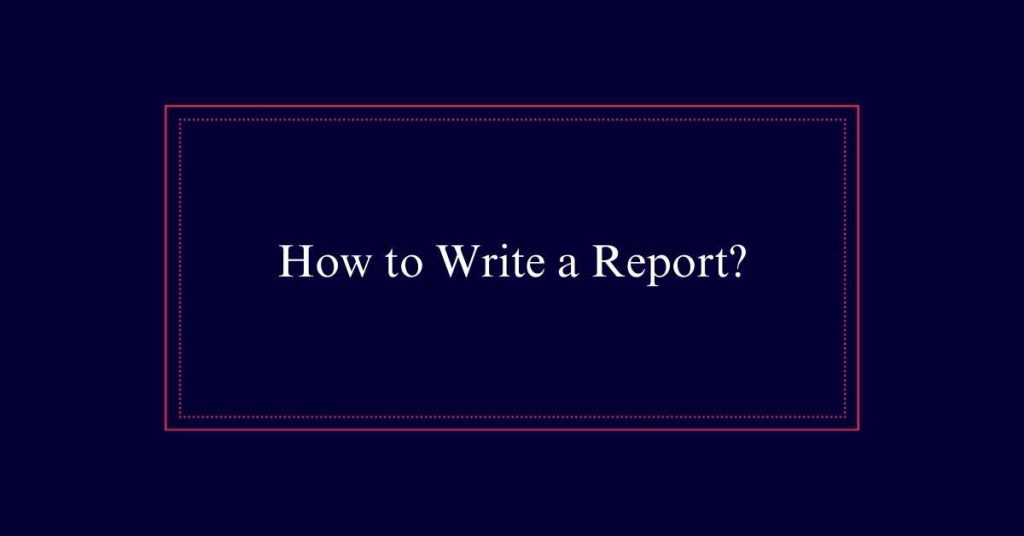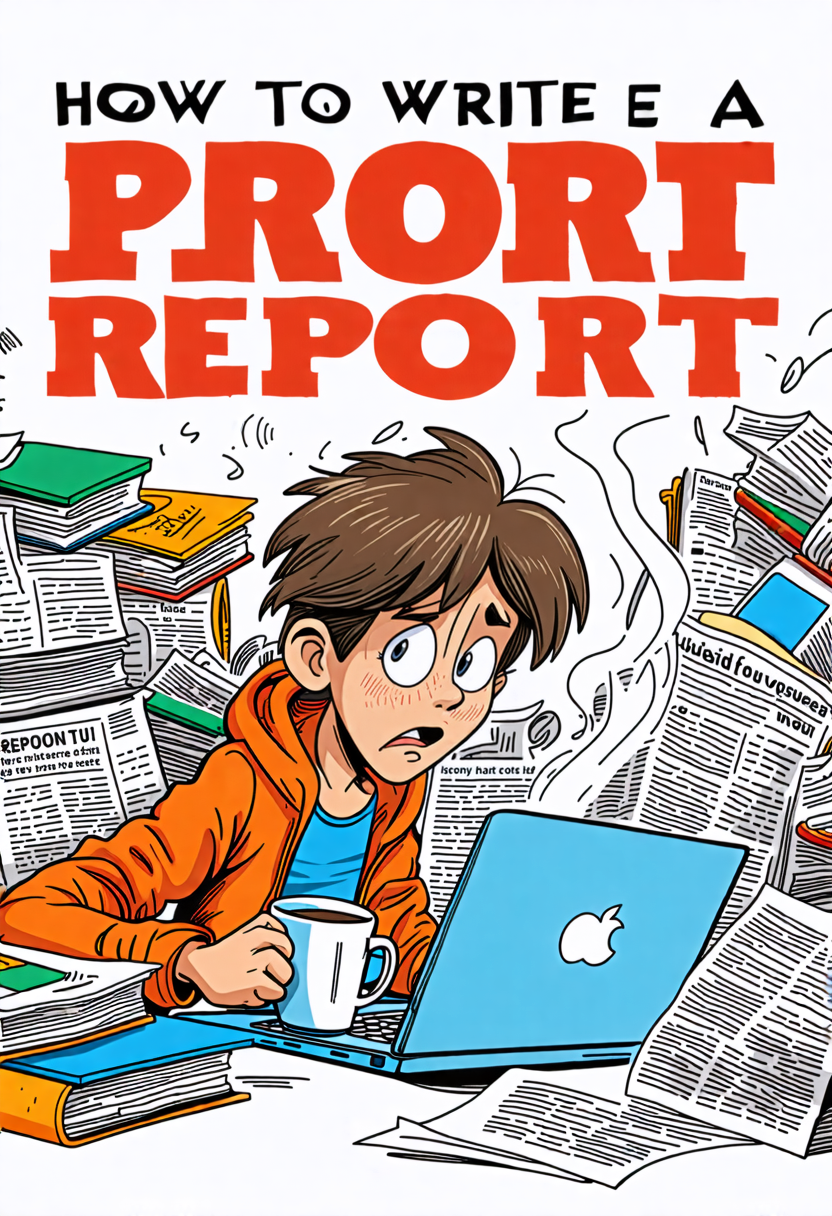How to Write a Report?
To write a report, start by understanding the type: academic, business, or scientific. Use a clear structure with an introduction, body, and conclusion. Begin with an executive summary that gives a quick overview of key points. Organize the body with headings and subheadings. Each section should have clear topic sentences and be supported by data or examples. Include visuals like charts to help clarify information. Don’t forget to highlight the key findings which summarize the main results.
Understanding Reports
When you hear the term ‘report,’ think of a detailed account that presents facts on a specific topic. Reports are official documents that outline information clearly and logically. They’re often written by experts and stick strictly to facts. You read reports to get reliable data on a subject.
They’re organized in a way that makes it easy to find what you need. You’ll notice headings, subheadings, and structured sections. A well-written report helps you understand complex information quickly. It’s not just about listing facts; it’s about presenting them in an organized manner.
Types of Reports
Reports come in various types, each serving a unique purpose and audience. Academic reports test your understanding of subjects. Business reports help companies make informed decisions. Scientific reports share research findings in journals. Each type has its own format and expectations.
Reports can be formal or informal. Formal reports are detailed and structured. Informal ones are brief and less rigid. You might write a short internal report for your team. Or, you could create a long external report for clients.
Knowing the type of report you need is essential. It guides your research and writing. Always consider your audience. Tailor your language and content to meet their needs. This ensures your report is effective and well-received.
Executive Summary
An executive summary gives a quick overview of your report’s key points and findings. It’s usually the first section but written last. You need to highlight the main objectives, methods, results, and conclusions. Keep it short, around one to two paragraphs, and use simple, clear language. This summary helps busy readers grasp the essence without reading the entire report.
Avoid technical jargon and unnecessary details. Focus on what’s most important. Think of it as your report’s elevator pitch. Remember, the executive summary should stand alone. It should give a complete picture even if someone doesn’t read the rest of your report. Stay concise and to the point, ensuring you cover all critical information.
Report Body
Now let’s move on to the core of your report, the body, where you present your findings and analysis.
Start by organizing your content into clear sections with headings and subheadings. Each section should focus on a specific point or theme.
Use paragraphs to break down complex information into manageable chunks. Make sure each paragraph starts with a topic sentence that tells the reader what to expect. Support your points with data, examples, or quotes.

Be clear and concise, avoiding unnecessary jargon. Use visuals like charts or graphs if they help clarify your points.
Key Findings
Understanding the key findings will help you grasp the core insights of your report. Key findings are the main results or discoveries from your research. They highlight the most important information that supports your thesis.
When writing key findings, be clear and concise. Use bullet points if necessary for easy reading. Each finding should directly relate to your report’s objectives. Avoid adding extra details or opinions. Just stick to the facts.
This section helps readers quickly understand what your research revealed without needing to read the entire report. Make sure your key findings are organized logically and presented clearly. This guarantees your audience can easily comprehend the essential points of your work.
Choosing a Topic
Choosing a topic for your report is the first step in creating a focused and effective document. Start by understanding the assignment requirements. Know what’s expected and what guidelines you need to follow.
Think about your interests. A topic you care about will make the writing process easier and more enjoyable. Consider the scope. Make sure your topic isn’t too broad or too narrow. It should be manageable within the given word limit.
Brainstorm ideas and jot them down. Evaluate each idea based on relevance, interest, and available resources. Finally, choose a topic that you can explore thoroughly and that will engage your readers.
With a clear topic, you’re ready for the next steps in your report.
Conducting Research
Gather reliable sources to guarantee your report is accurate and trustworthy. Begin by identifying reputable sources such as academic journals, books, and official websites. Avoid using unreliable sources like personal blogs or unverified articles. Use libraries and online databases to find credible information.
Take notes while reading and keep track of where each piece of information comes from. This will help you cite your sources correctly. Stay organized by categorizing your notes based on the sections of your report.
Always verify facts from multiple sources to confirm accuracy.
Creating an Outline
Creating an outline helps you organize your thoughts and guarantees your report covers all essential points. Start by listing your main sections: introduction, body, and conclusion. Under each section, jot down key ideas or facts you want to include. Use bullet points or numbers to keep it clear.
In the introduction, outline your topic and thesis. For the body, break it down into subheadings, each with supporting details. This structure guarantees you don’t miss any important information. Finally, outline your conclusion to summarize the key findings and interpretations.
An outline also helps you see the logical flow of your report. It’s a roadmap that guides your writing and makes the drafting process smoother.
Writing the Draft
Now that you’ve got your outline, start turning those notes into a full draft. Begin with your introduction. Clearly state your topic and thesis.
Move to the body. Follow your outline closely. Write one section at a time. Use headings and subheadings to keep it organized. Explain your findings in detail, but keep sentences short. Use facts and examples to support your points.
Finally, write your conclusion. Summarize your main points and restate your thesis. Make sure everything flows logically.
Don’t worry about making it perfect now. Focus on getting all your information down. You’ll have time to revise and polish it later. Keep your language simple and to the point.
Revising and Editing
When you’ve completed your draft, it’s time to revise and edit to guarantee clarity and accuracy. Start by reading your report aloud. This helps you catch awkward sentences and errors. Check for consistent use of tense and correct grammar. Confirm that your ideas flow logically from one to the next. Pay close attention to the details in your headings and subheadings.
Next, look at your word choice. Replace any vague terms with specific ones. Be concise; remove unnecessary words. Verify all facts and figures are accurate.
Frequently Asked Questions
How Do I Cite Sources in My Report?
To cite sources in your report, use in-text citations and a reference list. Follow the citation style required, like APA or MLA. Include author, date, and page number in-text, and full details in the reference list.
What Are Common Mistakes to Avoid in Report Writing?
Avoid common mistakes in report writing. Don’t skip proofreading. Use clear, concise language. Stick to the facts. Avoid plagiarism by citing sources. Keep your structure organized. Don’t forget your thesis statement. Be precise and accurate.
How Do I Ensure My Report Meets the Intended Audience’s Needs?
Know your audience’s background and expectations. Use appropriate language and include relevant data. Keep it concise and organized. Always provide clear explanations and summaries. Tailor the content to answer their specific questions and needs.







